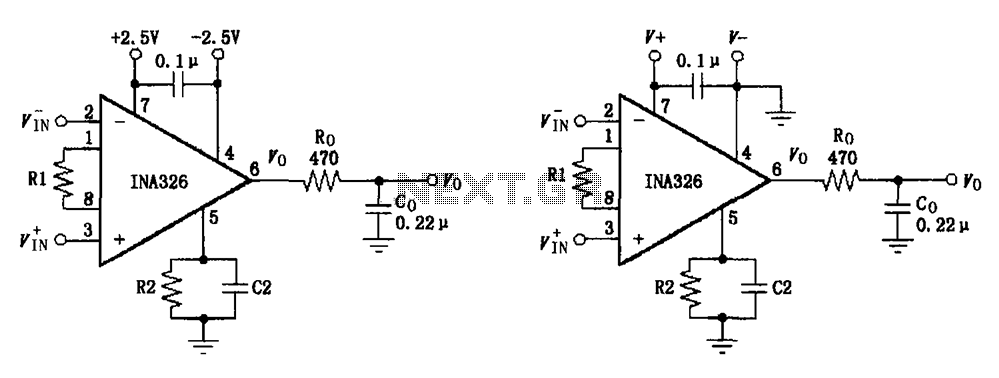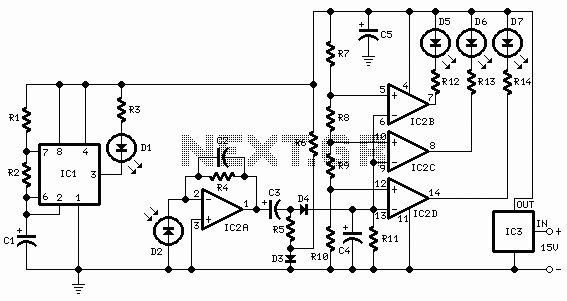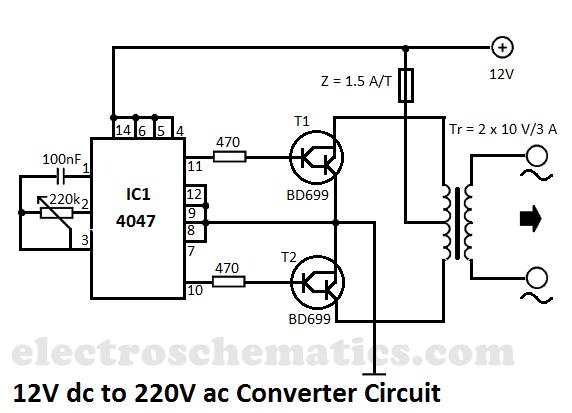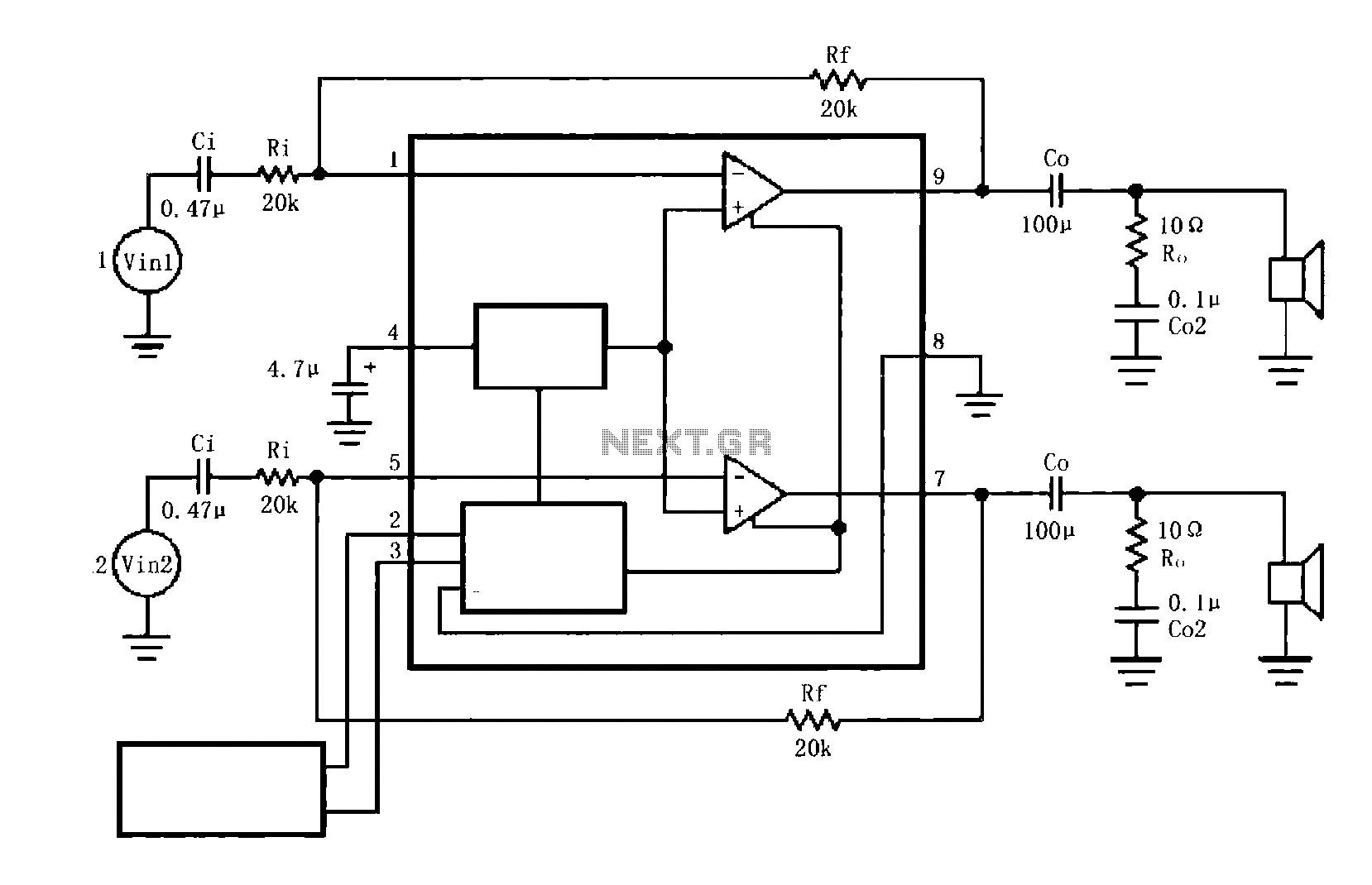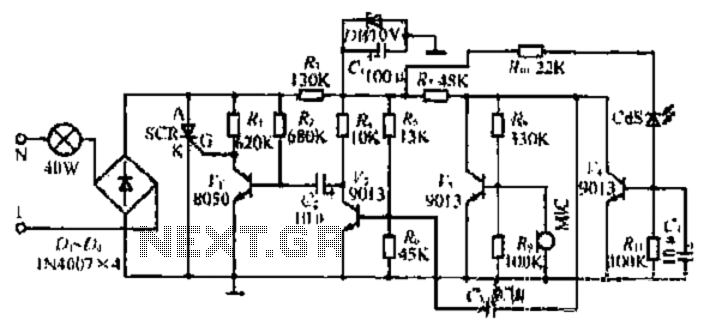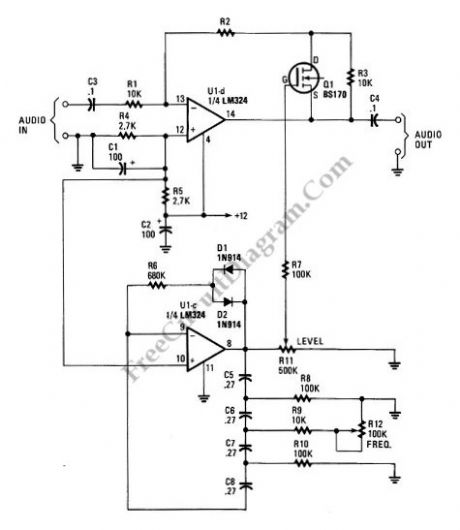
Microwave Motion Detector Circuit
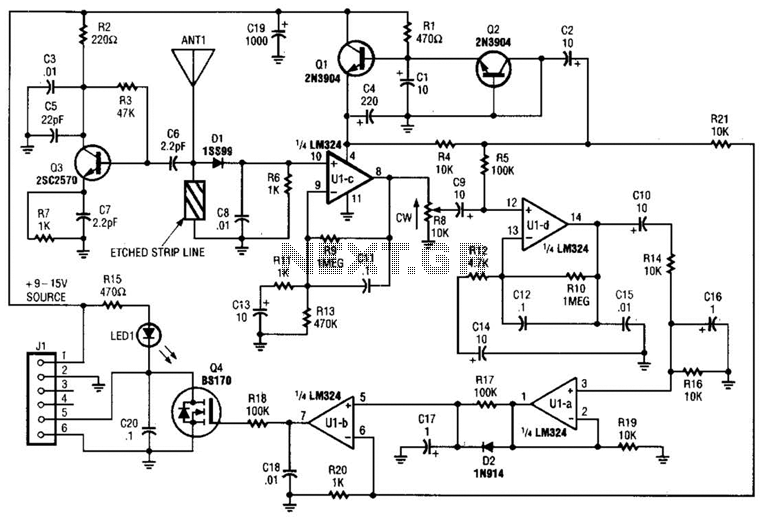
Operating at approximately 1.1 GHz, the detector senses disturbances in the electromagnetic field surrounding the antenna. The Doppler signal generated by detector D1 is amplified and used to control a power MOSFET switch. The antenna consists of a short length of wire, typically ranging from 2 to 3 units.
The circuit operates in the microwave frequency range, specifically around 1.1 GHz, indicating it is likely designed for applications such as motion detection or radar systems. The antenna, being a short wire, is utilized for its simplicity and effectiveness in capturing high-frequency signals. Its length, being between 2 to 3 units, suggests that it is designed for optimal performance at the specified frequency, likely acting as a monopole antenna.
The detector, referred to as D1, plays a crucial role in sensing variations in the electromagnetic field. It converts the incoming electromagnetic waves into an electrical signal, which is then processed to identify any disturbances. The Doppler effect is utilized here, where the frequency shift of the reflected signals indicates movement within the detection range. This is particularly useful in security systems, automotive applications, or any scenario requiring motion detection.
The amplified Doppler signal is then fed into a power MOSFET switch. This component is selected for its high efficiency and fast switching capabilities, making it suitable for controlling larger loads or triggering other components in the circuit based on the detected signal. The MOSFET's gate can be driven by the amplified signal, allowing it to switch on or off rapidly in response to changes in the detected field, thus enabling real-time monitoring and response.
Overall, this circuit design effectively integrates an antenna, a detector, and a power switch to create a responsive system capable of detecting motion or field disturbances, making it applicable in various electronic and communication systems. Operating at around 1.1 GHz, the detector senses field disturbance in the neighborhood of the antenna. The Doppler signal from detector D1 is amplified and drives a power MOSFET switch. The antenna is a short (2 to 3) length of wire.
The circuit operates in the microwave frequency range, specifically around 1.1 GHz, indicating it is likely designed for applications such as motion detection or radar systems. The antenna, being a short wire, is utilized for its simplicity and effectiveness in capturing high-frequency signals. Its length, being between 2 to 3 units, suggests that it is designed for optimal performance at the specified frequency, likely acting as a monopole antenna.
The detector, referred to as D1, plays a crucial role in sensing variations in the electromagnetic field. It converts the incoming electromagnetic waves into an electrical signal, which is then processed to identify any disturbances. The Doppler effect is utilized here, where the frequency shift of the reflected signals indicates movement within the detection range. This is particularly useful in security systems, automotive applications, or any scenario requiring motion detection.
The amplified Doppler signal is then fed into a power MOSFET switch. This component is selected for its high efficiency and fast switching capabilities, making it suitable for controlling larger loads or triggering other components in the circuit based on the detected signal. The MOSFET's gate can be driven by the amplified signal, allowing it to switch on or off rapidly in response to changes in the detected field, thus enabling real-time monitoring and response.
Overall, this circuit design effectively integrates an antenna, a detector, and a power switch to create a responsive system capable of detecting motion or field disturbances, making it applicable in various electronic and communication systems. Operating at around 1.1 GHz, the detector senses field disturbance in the neighborhood of the antenna. The Doppler signal from detector D1 is amplified and drives a power MOSFET switch. The antenna is a short (2 to 3) length of wire.
